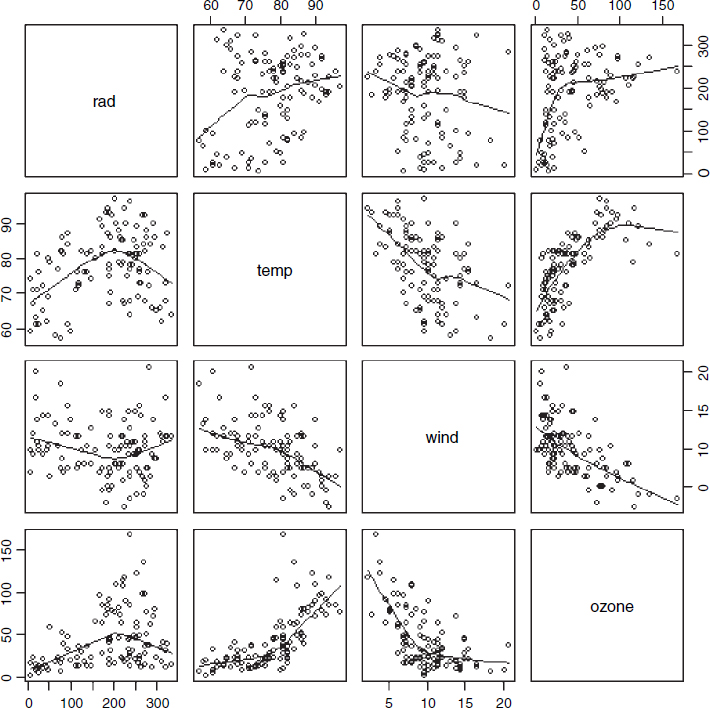Generalized Additive Models
This dataframe contains measurements of radiation, temperature, wind speed and ozone concentration. We want to model ozone concentration as a function of the three continuous explanatory variables using non-parametric smoothers rather than specified nonlinear functions (the parametric multiple regression analysis is on p. 434):
ozone.data<-read.table("c:\\temp\\ozone.data.txt",header=T) attach(ozone.data) names(ozone.data)
[1] "rad" "temp" "wind" "ozone"
For data inspection we use pairs with a non-parametric smoother, lowess:
pairs(ozone.data, panel=function(x,y) { points(x,y); lines(lowess(x,y))} )

Now fit all three explanatory variables using the non-parametric smoother s():
model<-gam(ozone~s(rad)+s(temp)+s(wind)) summary(model) Family: gaussian Link function: identity Formula: ozone ~ s(rad) + s(temp) + s(wind) Parametric coefficients: Estimate Std. Error t value Pr( > |t|) (Intercept) 42.10 1.66 25.36 < 2e-16 ***
Approximate significance of smooth terms:
edf Est.rank F p-value
s(rad) 2.763 6.000 2.830 0.0138 *
s(temp) 3.841 8.000 8.080 2.27e-08 ***
s(wind) 2.918 6.000 8.973 7.62e-08 ***
R-sq.(adj) = 0.724 Deviance explained = 74.8%
GCV score = 338 Scale est. = 305.96 n = 111
Note that the intercept is estimated as a parametric coefficient (upper table) and the three explanatory variables are fitted as smooth terms. All three are significant, ...
Get The R Book now with the O’Reilly learning platform.
O’Reilly members experience books, live events, courses curated by job role, and more from O’Reilly and nearly 200 top publishers.

